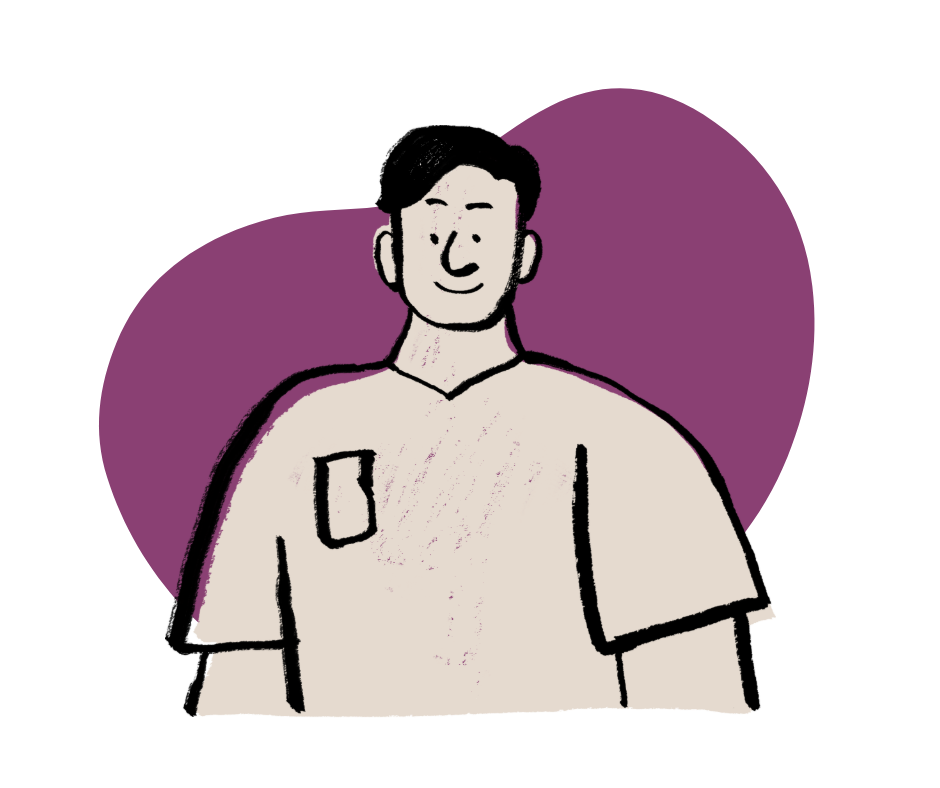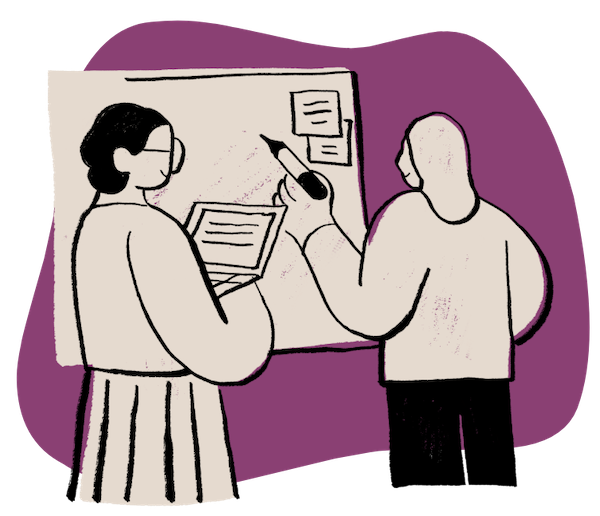Misophonia for Medical Professionals
What is Misophonia?
Prevalence studies¹ indicate that around 5 percent of the population experiences misophonia in a way which impacts their lives, sometimes to a disabling degree.
This means that misophonia is more common that Obsessive-Compulsive Disorder [OCD], Autism, Tourette, and many other well-known conditions.
This page helps medical professionals know what misophonia is, how to recognize it, how to support students who struggle with it, and to provide resources for everyone to manage life with this common, but misunderstood, sensory-based disorder.
“Misophonia is a disorder of decreased tolerance to specific sounds or stimuli associated with such sounds. These stimuli, known as “triggers,” are experienced as unpleasant or distressing and tend to evoke strong negative emotional, physiological, and behavioral responses that are not seen in most other people.”
— from Consensus Definition of Misophonia [2022]
Free clinician resources:
Free Misophonia Clinician Welcome Kit with brochures, resources, etc.
What misophonia can look like:
Covering ones ears or using other methods to block sounds, such as wearing headphones often or having background noise such as a fan on constantly.
Or also, staring intently at the source of a particular sound or certain motions.
Dysregulation of mood
Unexplained withdrawal from classroom or social activities.
Unexplained inattention.
Unexplained anxiety or irritation .
Outbursts that are not characteristic of the individual.
Panic attacks.
Signs of general sensory-overload (e.g. appearing to shut down, or "space out")
Unexplained crying.
Frequent requests for trips to the bathroom or to leave the room.
Frequent requests to see the nurse or to go outside.
Turning of head or body away from specific sounds, sights, or people.
Excessive tiredness
Although misophonia can certainly co-occur with other disorders and conditions, misophonia is not any of these. It is not a symptom of the other conditions. It is a unique disorder on its own.
Misophonia can be mistaken for:
Attention Deficit Hyperactivity Disorder [ADHD]
Obsessive-Compulsive Disorder [OCD].
Emotion dysregulation
Bipolar Disorder
Sensory Processing Disorder
Anxiety disorders
Oppositional defiant disorder [ODD]
Anger issues
Various audiological conditions such as hyperacusis, tinnitus, phonophobia, etc.
Other conditions

Our free 1-hour online course for clinicians is a great place to start when learning about misophonia and how to support your students and others who might experience this disorder.
Take our free short course on misophonia for clinicians.
Misophonia Clinician References
Assessing Misophonia in Clients
About the Duke Misophonia Assessments
Intro to the Duke Misophonia Questionnaire [DMQ]
Intro to the Duke Misophonia Interview [DMI]
Development and Initial Validation of the Duke Misophonia Questionnaire [September 2021] by M. Zachary Rosenthal, Deepika Anand, Clair Cassiello-Robbins, Zachary J. Williams, Rachel E. Guetta, Jacqueline Trumbull, and Lisalynn D. Kelley [Frontiers in Psychology]
About the S-FIVE Assessment [Selective Sound Sensitivity Syndrome Scale]
Listening to People with Misophonia: Exploring the MultipleDimensions of Sound Intolerance Using a New PsychometricTool, the S-Five, in a Large Sample of Individuals Identifying with the Condition [October 2021] by Silia Vitoratou, Nora Uglik-Marucha, Chloe Hayes, and Jane Gregory [Psych]
Other Misophonia Assessments:
The Berlin Misophonia Questionnaire Revised (BMQ-R): Development and validation of a symptom-oriented diagnostical instrument for the measurement of misophonia [June 2022] by Nico Remmert, Katharina Maria Beate Schmidt, Patrick Mussel, Minne Luise Hagel, Michael Eid [PLoS One].
Development and Psychometric Properties of MisoQuest—A New Self-Report Questionnaire for Misophonia, [March 2020] by Marta Siepsiak, Andrzej Sliwerski, and Wojciech Łukasz Dragan [International Journal of Environmental Research and Public Health]
Multidimensional Inventory of Sound Tolerance in Adults (MIST-A) [Last Updated: April 2024] Zachary J Williams, Carissa J. Cascio, Tiffany G Woynaroski
Recommended Articles and Resources for Clinicians
A Consensus Definition of Misophonia: A Delphi Study [March 2022] by Susan Swedo, David M. Baguley, Damiaan Denys, Laura J. Dixon, Mercede Erfanian, Alessandra Fioretti, Pawel J. Jastreboff, Sukhbinder Kumar, M. Zachary Rosenthal, Romke Rouw, Daniela Schiller, Julia Simner, Eric A. Storch, Steven Taylor, Kathy R. Vander Werff, and Sylvina M. Raver [Frontiers in Neuroscience]
Clinician’s Guide to Misophonia [Audiology] by Jenna M. Pellicori, AuD, CCC-A
From Triggers to Treatment: Audiologists’ Role in Misophonia by Dr. Prashanth Prabhu, India
Information for Clinicians About Misophonia by Drs. Ward, Simner, et. al., University of Sussex, UK.
Moving Away From Reductionist Thinking in Misophonia [2024] by Dr. Jennifer Jo Brout [Psychology Today]
Misophonia Complicates Relationships in Complex Ways [2022] by Dr. Jennifer Jo Brout [Psychology Today]
Misophonia for Clinicians by Dr. Jane Gregory, Sounds Like Misophonia
Scope of Practice in Audiology by the American Speech-Language-Hearing Association.
Sounds Like Misophonia for Clinicians by Dr. Jane Gregory
The 5-A Plan : How to Respond When Someone Tells You About Their Misophonia, or any Invisible Disorder. by Cris Edwards [soQuiet]
What doctors wish patients knew about misophonia [2024] by Sara Berg [American Medical Association]
Recommended Research about Misophonia for Clinicians.
A phenomenological cartography of misophonia and other forms of sound intolerance [March 2023 ] by Nora Andermane, Matilde Bauer, Ediz Sohoglu, Julia Simner, and Jamie Ward [iScience]
The Unified Protocol for Transdiagnostic Treatment of Emotional Disorders Compared With Diagnosis-Specific Protocols for Anxiety Disorders: A Randomized Clinical Trial [2017] by David H Barlow , Todd J Farchione , Jacqueline R Bullis, Matthew W Gallagher, Heather Murray-Latin, Shannon Sauer-Zavala , Kate H Bentley , Johanna Thompson-Hollands, Laren R Conklin, James F Boswell, Amantia Ametaj, Jenna R Carl, Hannah T Boettcher, Clair Cassiello-Robbins [JAMA Psychiatry]
What sound sources trigger misophonia? Not just chewing and breathing [June 2021] by Heather Hansen, Andrew B. Leber, and Zeynep M Saygin [Journal of Clinical Psychology]
Misophonia: A Systematic Review of Current and Future Trends in This Emerging Clinical Field [2022] by Antonia Ferrer-Torres and Lydia Giménez-Llort [International Journal of Environmental Research and Public Health]
Misophonia is related to stress but not directly with traumatic stress [February 2024] by RE Guetta, M Siepsiak, Y Shan, E Frazer-Abel, MZ Rosenthal [PLOS ONE]
Neural evidence for non-orofacial triggers in mild misophonia [August 2022] Heather A. Hansen, Patricia Stefancin, Andrew B. Leber, and Zeynep M. Saygin [Frontiers in Neuroscience]
Process-based CBT: The science and core clinical competencies of cognitive behavioral therapy [2018] by Steven C. Hayes and Stefan G. Hofmann [New Harbinger Publications, Inc]
The Brain Basis for Misophonia, [Feb. 2017] by Sukhbinder Kumar, Olana Tansley-Hancock, William Sedley, Phillip E. Gander, Doris-Eva Bamiou, Timothy D. Griffiths, et. al. [Current Biology]
The Motor Basis for Misophonia [May 2021] by Sukhbinder Kumar, Pradeep Dheerendra, Mercede Erfanian, Ester Benzaquén, William Sedley, Phillip E. Gander, Meher Lad, Doris E. Bamiou and Timothy D. Griffiths [Journal of Neuroscience]
Development and Evaluation of a Sound-Swapped Video Database for Misophonia [July 2022] Patrawat Samermit, Michael Young, Allison K. Allen, Hannah Trillo, Sandhya Shankar, Abigail Klein, Chris Kay, Ghazaleh Mahzouni, Veda Reddy, Veronica Hamilton, and Nicolas Davidenko [Frontiers]
Misophonia: Diagnostic Criteria for a New Psychiatric Disorder. [Jan. 2013] by Schröder A, Vulink N, Denys D; [Plos One]
Misophonia in the UK: Prevalence and norms from the S-Five in a UK representative sample [March 2023] by Silia Vitoratou, Chloe Hayes, Nora Uglik-Marucha, Oliver Pearson, Tom Graham, and Jane Gregory [PlosOne]



